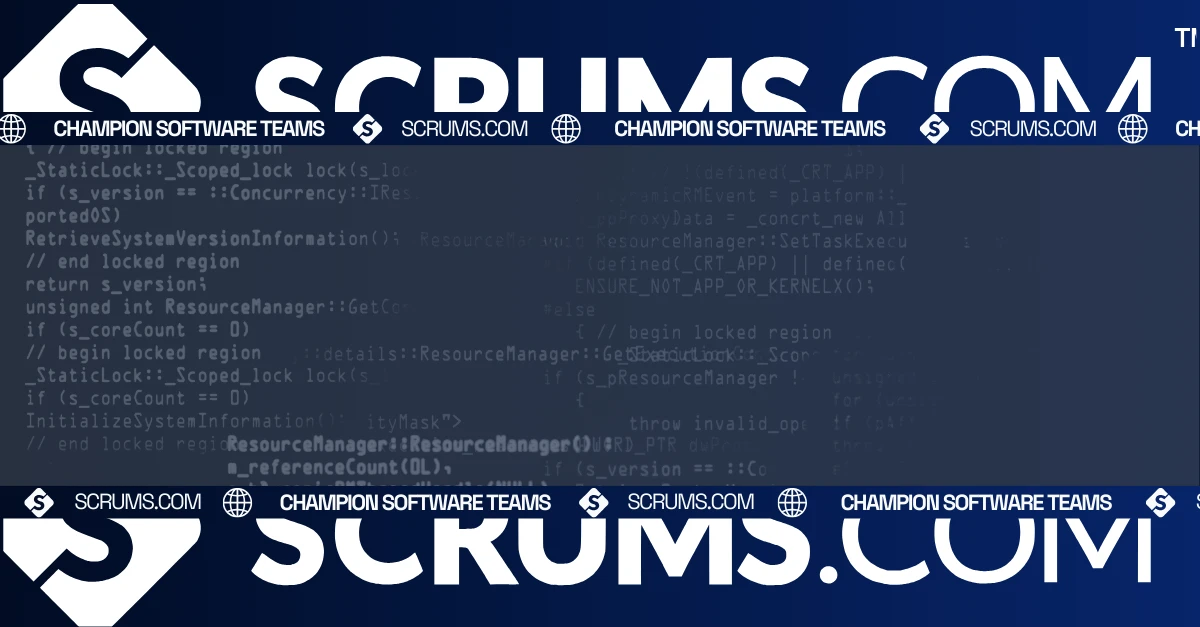Accelerate Web Development with The Angular Framework
Introduction to Angular
Angular, developed and maintained by Google, is a comprehensive front-end web framework that revolutionizes the way modern applications are built today. Initially launched in 2010 as AngularJS , the framework has undergone significant improvements, stemming from its complete rewrite in 2016 to enhance speed, scalability, and performance.
Angular is the framework of choice for creating dynamic single-page applications (SPAs) and large-scale enterprise web applications. By leveraging declarative templates, two-way data binding, and dependency injection, Angular improves efficiency and maintainability for developers.
For business owners and CTOs , Angular presents an opportunity to reduce development time, ensure application consistency, and improve collaboration between teams. With a reliable TypeScript -based architecture, it’s widely adopted by countless organizations—ranging from startups to enterprise-level software development companies. Angular's comprehensive tooling makes it easy for teams to scale while maintaining peak performance, offering businesses a competitive advantage in today’s fast-paced market.
What is Angular?
Angular is an open-source, TypeScript-based web framework designed for building modern web applications that require a high degree of scalability, interactivity, and speed. Created by Google, Angular was developed to replace its predecessor, AngularJS, bringing with it improvements that support not just SPAs but entire enterprise ecosystems that rely on dynamic user interfaces and responsive design.
Angular is structured around a modular framework, which organizes code into distinct modules for ease of maintenance and flexibility. This foundation enables companies to build applications more predictably with reusable components across different projects, reducing redundancy and maximizing output effectiveness.
Angular’s Advantages :
- Flexibility: Once described as “opinionated” due to its strict rules, Angular now offers a more flexible design system, making it apt for everything from mobile applications to full-stack web platforms.
- Comprehensive Dev Tools: The framework includes testing, routing, and HTTP client features right out of the box, making it one of the most complete web frameworks available.
Core Features and Functionalities
1. Two-Way Data Binding
Angular’s two-way data binding automatically syncs the data between a model and the view, reducing manual code and making it easier for developers to build applications that dynamically reflect changes in real-time.
Business Value: Reduces the effort required to update UI elements and improves development speed, ensuring faster delivery cycles in agile workflows.
2. Modular Architecture
Angular organizes code into modules, allowing developers to compartmentalize complex applications into smaller, more manageable parts. This helps improve efficiency in large-scale projects.
Business Value: Scalable development means easier management of codebases in large software development companies, ultimately improving team agility and reducing maintenance costs.
3. Dependency Injection
Angular’s dependency injection system allows services to be easily injected into components, minimizing duplication and making application units more isolated and reusable.
Business Value: Promotes reusability of services across multiple components, lowering development costs, and reducing redundancies in enterprise-level applications.
With Angular, developers can create apps targeting multiple platforms , whether native web, mobile (via Ionic or NativeScript ), or even desktop apps.
Business Value: Delivers cost savings for businesses that need cross-platform compatibility without having to invest in multiple development teams or siloed frameworks.
5. Ahead-of-Time Compilation (AOT)
Angular uses Ahead-of-Time (AOT) compilation to convert TypeScript code into JavaScript while the application is being built, resulting in faster rendering and improved performance.
Business Value: Reduces load times and enhances the user experience, positively impacting key performance metrics for e-commerce and other fast-paced industries.
6. Angular CLI
The Angular Command Line Interface (CLI) expedites several development processes, including project setup, building, and testing. Developers can quickly scaffold new applications and add features with minimal code intervention.
Business Value: Simplifies project management, reducing onboarding time for new developers, and enhances team efficiency, delivering faster project completions.
Benefits for Businesses and Development Teams
For Businesses:
- Increased ROI: By leveraging a standardized framework like Angular, businesses can decrease development times and reduce developer complexity, maximizing ROI. Angular’s structure also allows for consistency across multiple projects, which reduces long-term technical debt.
- Faster Time-to-Market: Thanks to features like two-way data binding and real-time compilation, Angular enables faster iterations and application releases. In a market where speed is crucial, businesses can maintain a competitive edge with rapid user feature deployment.
- Cost Savings through Reusability: Angular’s modular architecture and dependency injection allow for creating services and components that are usable across applications, significantly cutting development costs by eliminating the need for redundancy.
For Developers:
- Comprehensive Out-of-the-Box Tools: Angular includes everything developers need—from testing suites to build environments—ensuring fewer external dependencies and an accelerated development process.
- Seamless Front-End to Back-End Integration: Angular partners seamlessly with most back-end languages and frameworks (such as PHP,.NET, Ruby, and Python), leading to easier front-end and back-end synchronization in full-stack development projects.
- Enhanced Collaboration: Angular’s component-based architecture allows different teams to work on distinct parts of a project concurrently. This enhanced collaboration reduces bottlenecks and allows for smoother, more continuous development cycles.
- TypeScript Support: Angular is written in TypeScript, a superset of JavaScript. TypeScript's strong typing, tools, and IDE support improve code readability and maintainability, providing better error detection before runtime.
Use Cases and Applications
1. Enterprise Web Applications
Angular is commonly used to build large-scale enterprise solutions , combining modern web techniques with robust security features. Angular’s modular structure makes it possible to manage complex applications like HR systems, CRM platforms, or financial dashboards.
2. Single Page Applications (SPAs)
E-commerce solutions, SaaS platforms, and social networks often rely on SPAs for a seamless user experience. Angular’s fast-rendering, efficient DOM management, and modular development make it an excellent option for developing dynamic SPAs that load quickly.
3. Cross-Platform Mobile Applications
With frameworks like Ionic and NativeScript, Angular developers can create cross-platform mobile applications using a single codebase, integrating the power of Angular’s two-way data binding with mobile UI elements.
Industry Examples:
- Fintech: Angular is used by fintech companies to create forward-looking dashboards and secure transaction platforms that frequently involve updating elements based on real-time data inputs. Angular ensures efficiency, security, and an optimal user experience.
- Healthcare: During the pandemic, healthcare apps that focus on patient management systems, appointment scheduling, and telemedicine were built with Angular, allowing for real-time interactions between patients and medical staff.
- E-commerce: Fast-paced online stores like Amazon clone sites or Shopify apps harness Angular’s Ahead-of-Time compilation to ensure fast product listings, SEO readiness, and optimized performance for fast shipping and checkout experiences.
Integration Capabilities and Ecosystem
Angular integrates well within a diverse tech ecosystem, offering broad compatibility across several platforms, tools, and services.
Powerful Integrations:
- Cloud Platforms: Angular integrates effortlessly with AWS, Microsoft Azure, and Google Cloud. This support helps companies scale applications quickly, deploy them onto the cloud, and manage complex microservice architectures.
- DevOps Workflows and CI/CD Pipelines: Angular makes it easier to plug into Jenkins , CircleCI, Azure DevOps, and other continuous integration/delivery tools, ensuring smooth release cycles and automated testing.
- Testing Frameworks: The framework offers native support for Karma , Protractor , and Jasmine, making unit, end-to-end, and integration testing simple and efficient.
- API Integration via RxJS: Angular’s integration with RxJS enables reactive programming. This is crucial for creating responsive and scalable solutions that sync across multiple platforms using asynchronous APIs and real-time communication services like WebSockets.
Comparison with Alternatives
Angular vs. React:
React is a popular choice for developers looking to use a flexible library, but Angular wins in terms of comprehensive features right out of the box. Angular offers more off-the-shelf solutions for routing, testing, and form validation without the need for as many external libraries.
Angular vs. Vue.js:
Vue.js is simpler and easier for smaller teams to pick up, but Angular shines in large, enterprise applications requiring scalable architectures and complex data handling requirements.
When to Choose Angular:
You should consider Angular if your team requires built-in tools for complex application development, advanced data handling, and industrial-scale projects where performance and scalability are critical.
Getting Started with Angular
Step-by-step guide for businesses and developers:
- Install Angular CLI: Start by installing Angular’s Command Line Interface (CLI) for one-click project creation. Run npm install -g @angular/cli from your terminal.
- Set Up a New Angular Project: In your CLI, run ng new PROJECT-NAME. Angular handles project setup, including file structuring, package installations, and initial dependencies.
- Develop Your App: Use Angular’s built-in features like router, forms module, and HTTP client to develop your app. Utilize components to break down the UI into manageable pieces.
- Test and Debug: Leverage Karma and Protractor to run end-to-end tests, making sure that each component works as expected before deployment.
- Deploy on Cloud Platforms: With easy integrations for AWS, Firebase, and Azure, you can seamlessly deploy your Angular project to the cloud from the CLI.
For detailed tutorials, check out Angular’s official documentation or access free webinars from Google’s Angular learning hub.
Related Tools and Resources
- Angular vs. React: Which Framework Is Better?
- How to Build Scalable SPAs with Angular
- Deploying Angular Apps with AWS
FAQs
We've got you covered, these are some common questions we receive. Not seeing the answer to something?...
Yes, Angular is completely open-source and free under the MIT license, making it accessible for businesses of all sizes.
Yes, using Angular Universal, developers can enable server-side rendering to improve performance and SEO capabilities.
Angular is built with TypeScript, but it also supports JavaScript and Dart for easier adoption by developers familiar with these languages.
Yes, using frameworks like Ionic or NativeScript, developers can create cross-platform mobile applications with Angular at their core.
Absolutely. Angular integrates flawlessly into DevOps workflows, supporting CI/CD pipelines, automated testing, and cloud deployment through tools like Jenkins and Azure DevOps.
Angular includes built-in security features like sanitization and DOM manipulation protections, ensuring your application is resilient to typical web-based threats like XSS or CSRF.
Explore Software Development Blogs
The most recent trends and insights to expand your software development knowledge.




